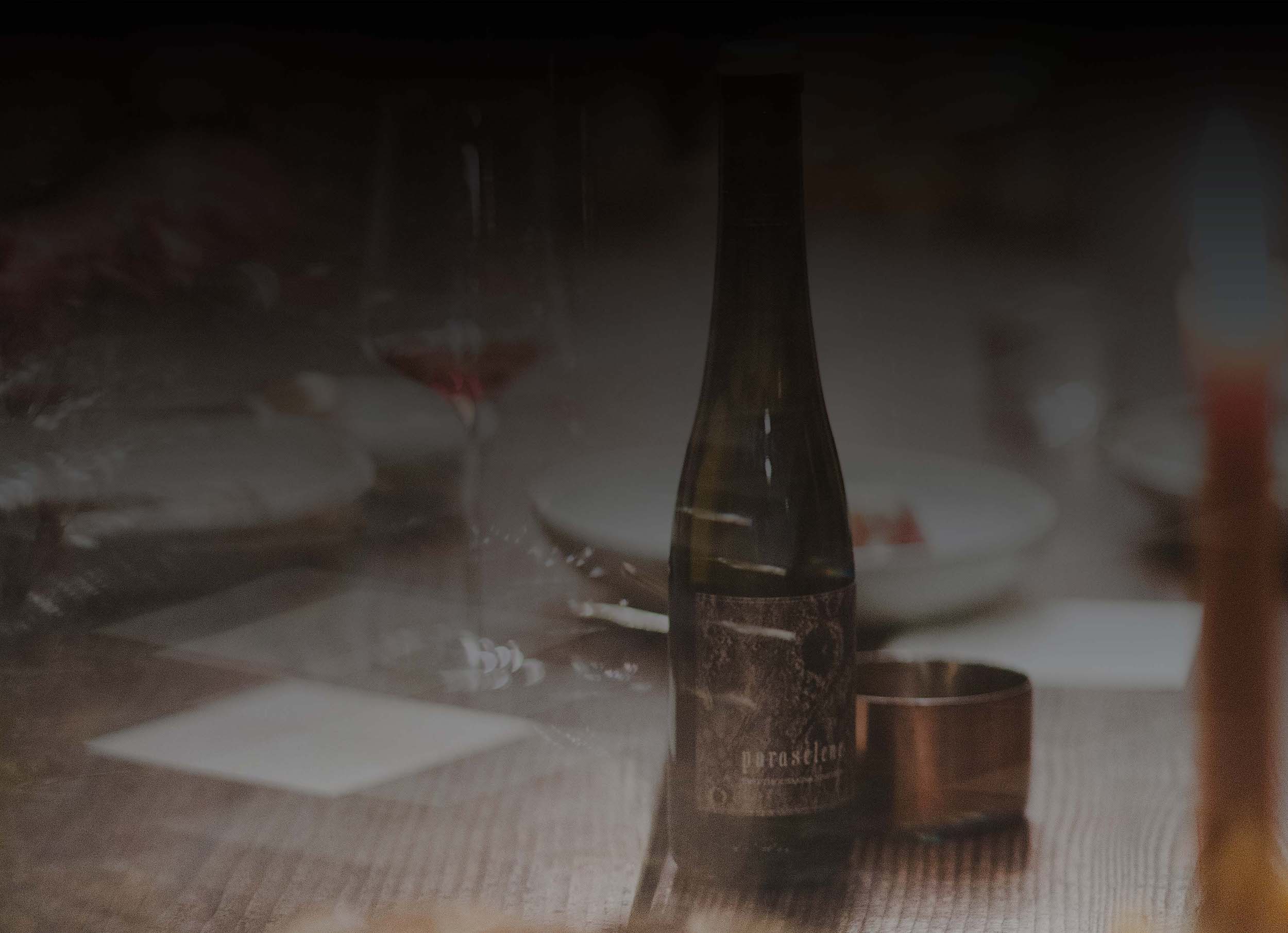Amity, OR 97101
Amity, OR 97101

Back to Wines
09/ Paraselene
We don’t keep our feelings about Mimi Casteel a secret. Everyone who knows us and everyone we meet can tell, in an instant, how devoted we are to her work. She is our constant inspiration and our sometimes partner in crime. We are terrified of her, confused by her and in awe of her in turns. It goes without saying that if she grows it, we want to work with it. So in 2018 when she walked us through her Hope Well Vineyard, pointing to various blocks of pinot noir of which she could share, we marched alongside chanting yes…yes…that too…yes. To get from one side of the vineyard to the other, we walked through a broad block of chardonnay. “Who gets this,“ I asked, and she listed a handful of producers, almost none of whom make chardonnay. “It’s clone 77,” she offered by way of explanation. When I looked at her with the same lost look that passes over me anytime the conversation veers towards clones she went further. “Musqué.” Musqué is a French term applied to certain varieties or clones of grapes used for making wine. The term means both perfumed (“musky”) and Muscat-like, and indicates that the variety or clone is highly aromatic. (Thank you Jancis…I’d be lost without you) The winemakers in that block asked for little in care of the vines, were willing to pay less than little for the fruit and blended the resultant wines into their pinot blancs, their rieslings, their gewürtz. Infuriating.
It’s hard to think of a situation more absurd and yet it happens all the time; books judged by their covers, value placed where none is due, things of beauty discounted because they don’t conform to some preconceived notion of what should be. Because it didn’t taste “like chardonnay” it didn’t get to live its life as such. So dumb. I asked Mimi for the whole block, told her I would pay the same price as for our blocks of pinot noir and got to lavish our attention upon it for the whole of the season.
Because we had never worked with it before and there was no example of it in its pure form for us to even taste as a reference, we decided to make four different versions of it in that first year. For grapes, as with all fruit, there is not a singular perfect moment to pick but rather a window of time that opens as the fruit first begins to taste resolved and clear; the acid not raw, the flavors shifted from green to gold, a palpable cohesion between it’s disparate parts. And then, some time later, the window will close; the flavor, structure and acid once again falling out of equilibrium. But before that window closes, there is a moment of pronounced density, wild aromatic capability and commensurate structural development. We picked part of this block at the very first moment the fruit started to taste great and split the pick in two: half of this harvest was made the way we make all of our chardonnay and the other half frozen, whole cluster, pressed and fermented for ice wine. Then almost exactly one month later, we picked the remainder of the fruit and made two versions again. Half, once again, as we handle all chardonnay and half held in baskets, with air space around each cluster, to continue ripening off the vine for a month longer still.
The results are astonishing. Each of the four versions is exquisitely detailed, explosively aromatic and decidedly unique. This ice wine, Paraselene is the first wine from this fruit that we’ve bottled. The other sweet wine, made from the fruit held in baskets, was given the name Parhelion. The dry versions made their way to the blending table with the rest of the 2018s.

